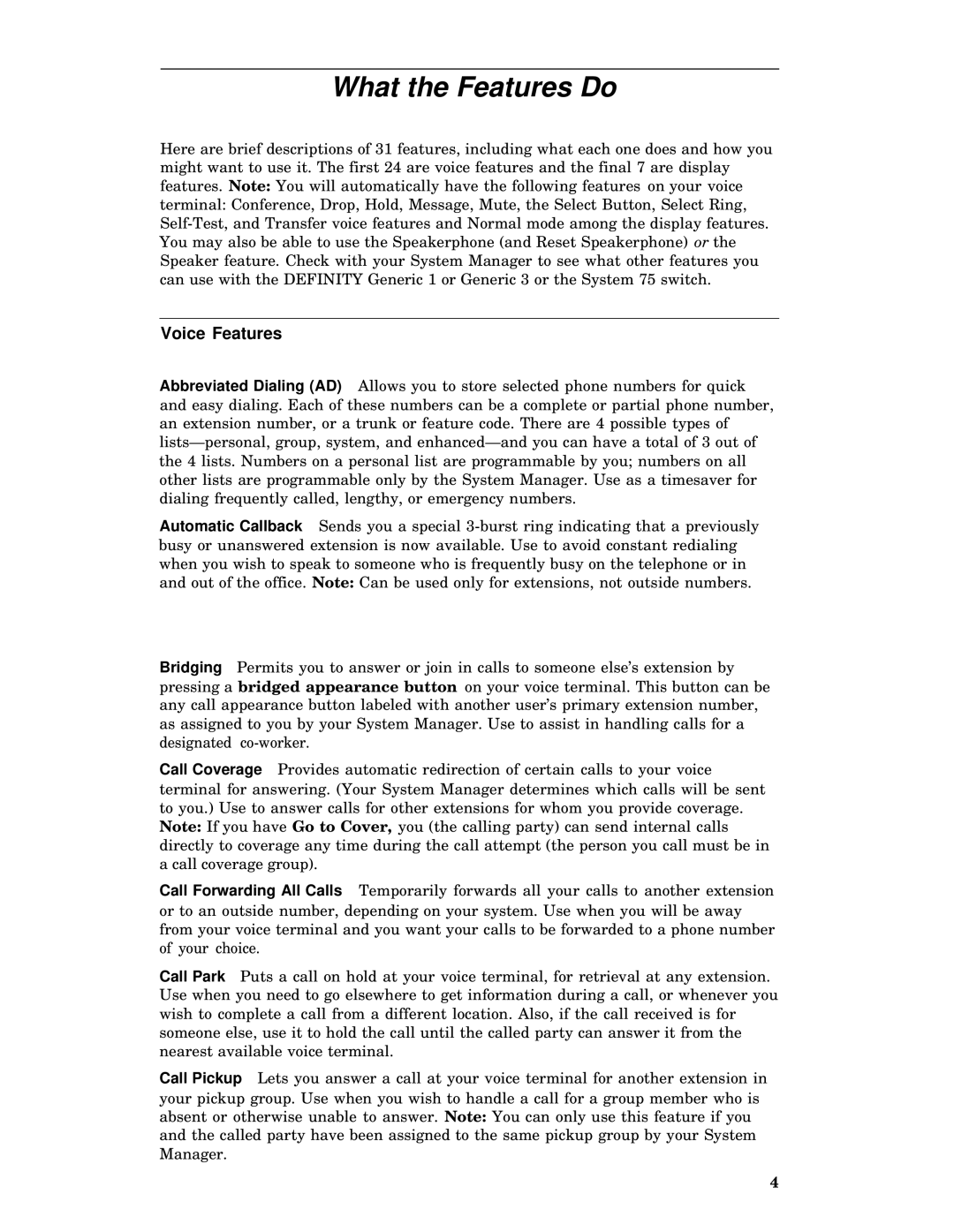
What the Features Do
Here are brief descriptions of 31 features, including what each one does and how you might want to use it. The first 24 are voice features and the final 7 are display features. Note: You will automatically have the following features on your voice terminal: Conference, Drop, Hold, Message, Mute, the Select Button, Select Ring,
Voice Features
Abbreviated Dialing (AD) Allows you to store selected phone numbers for quick and easy dialing. Each of these numbers can be a complete or partial phone number, an extension number, or a trunk or feature code. There are 4 possible types of
Automatic Callback Sends you a special
Bridging Permits you to answer or join in calls to someone else’s extension by pressing a bridged appearance button on your voice terminal. This button can be any call appearance button labeled with another user’s primary extension number, as assigned to you by your System Manager. Use to assist in handling calls for a designated
Call Coverage Provides automatic redirection of certain calls to your voice terminal for answering. (Your System Manager determines which calls will be sent to you.) Use to answer calls for other extensions for whom you provide coverage. Note: If you have Go to Cover, you (the calling party) can send internal calls directly to coverage any time during the call attempt (the person you call must be in a call coverage group).
Call Forwarding All Calls Temporarily forwards all your calls to another extension or to an outside number, depending on your system. Use when you will be away from your voice terminal and you want your calls to be forwarded to a phone number of your choice.
Call Park Puts a call on hold at your voice terminal, for retrieval at any extension. Use when you need to go elsewhere to get information during a call, or whenever you wish to complete a call from a different location. Also, if the call received is for someone else, use it to hold the call until the called party can answer it from the nearest available voice terminal.
Call Pickup Lets you answer a call at your voice terminal for another extension in your pickup group. Use when you wish to handle a call for a group member who is absent or otherwise unable to answer. Note: You can only use this feature if you and the called party have been assigned to the same pickup group by your System Manager.
4
